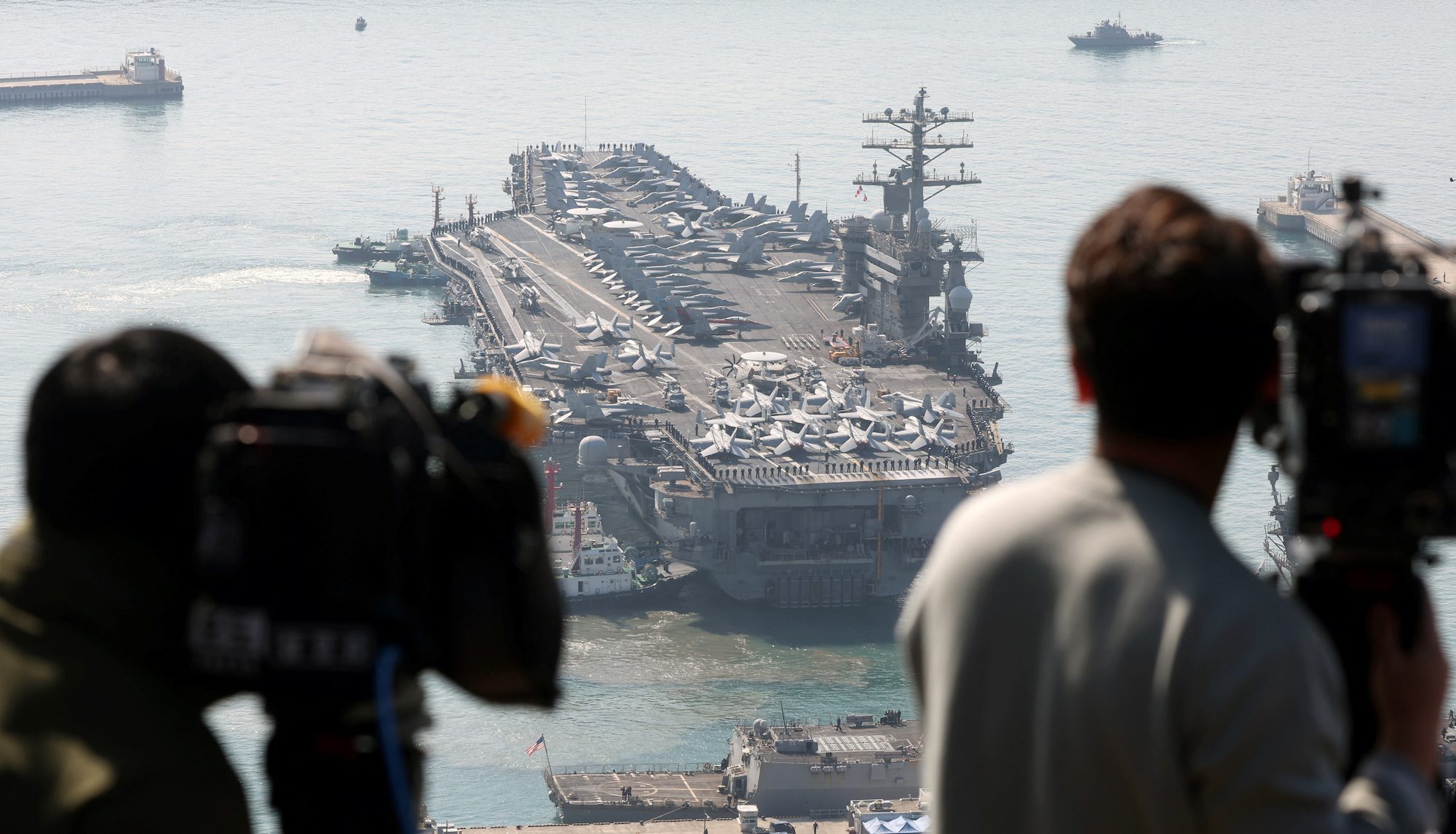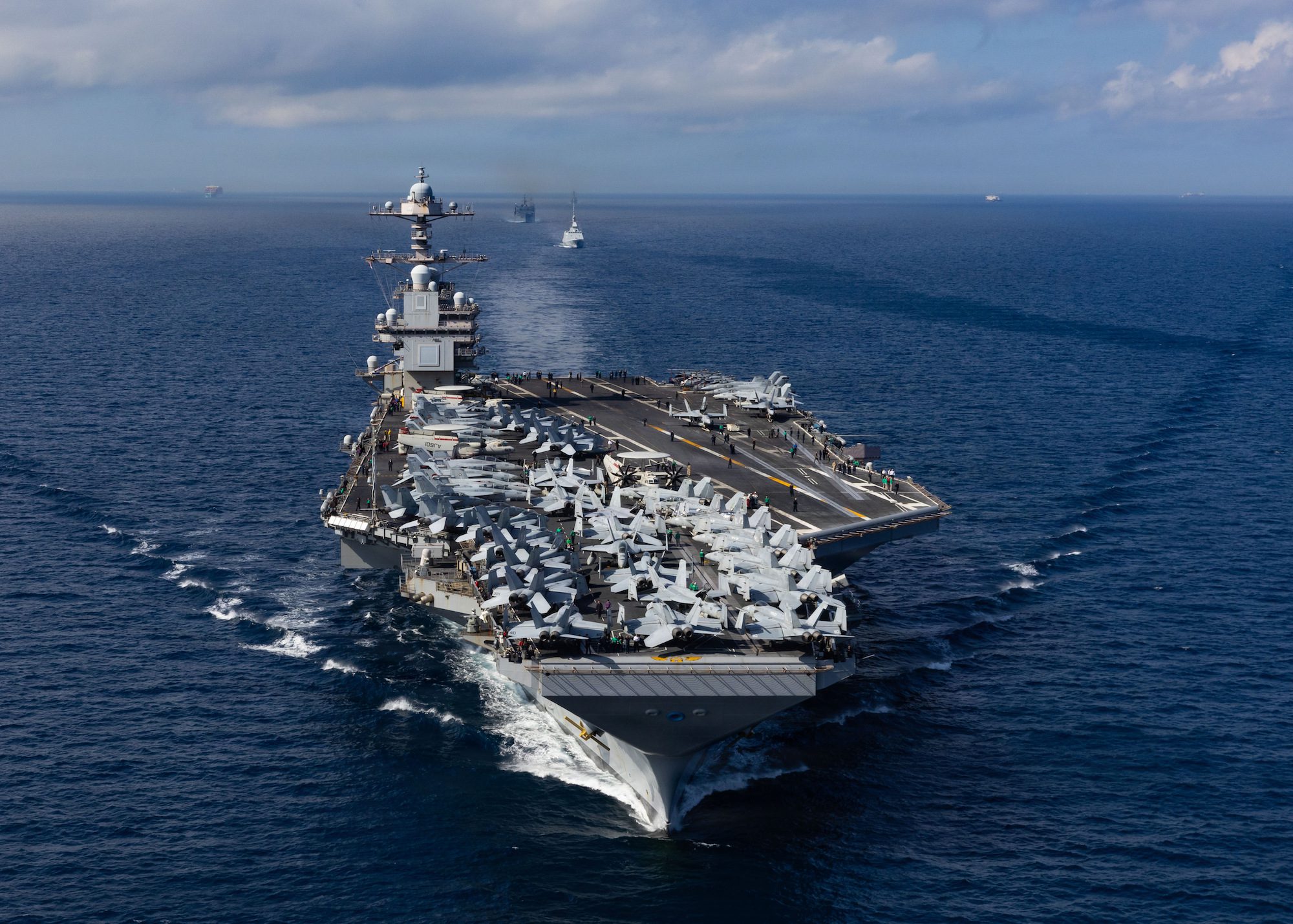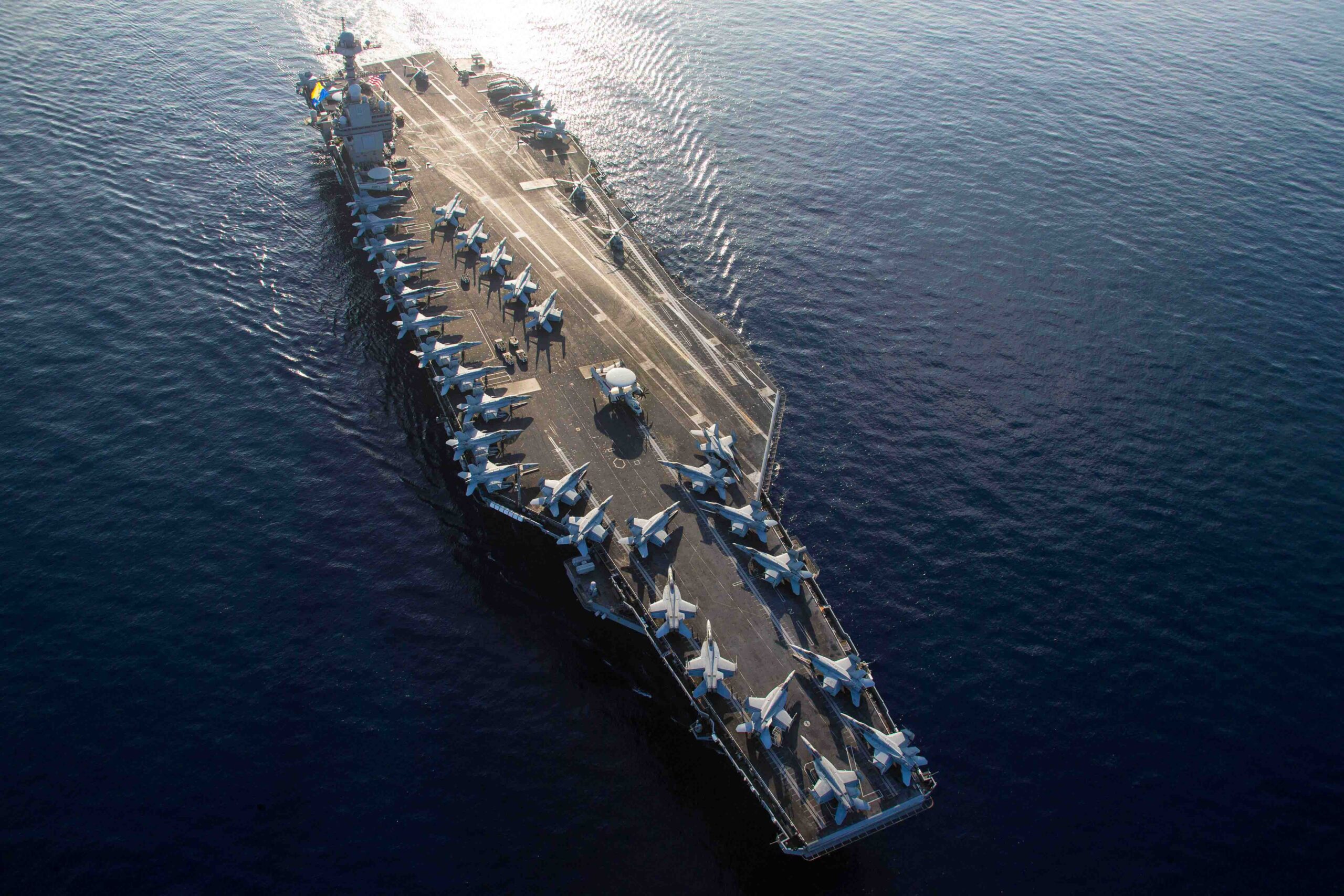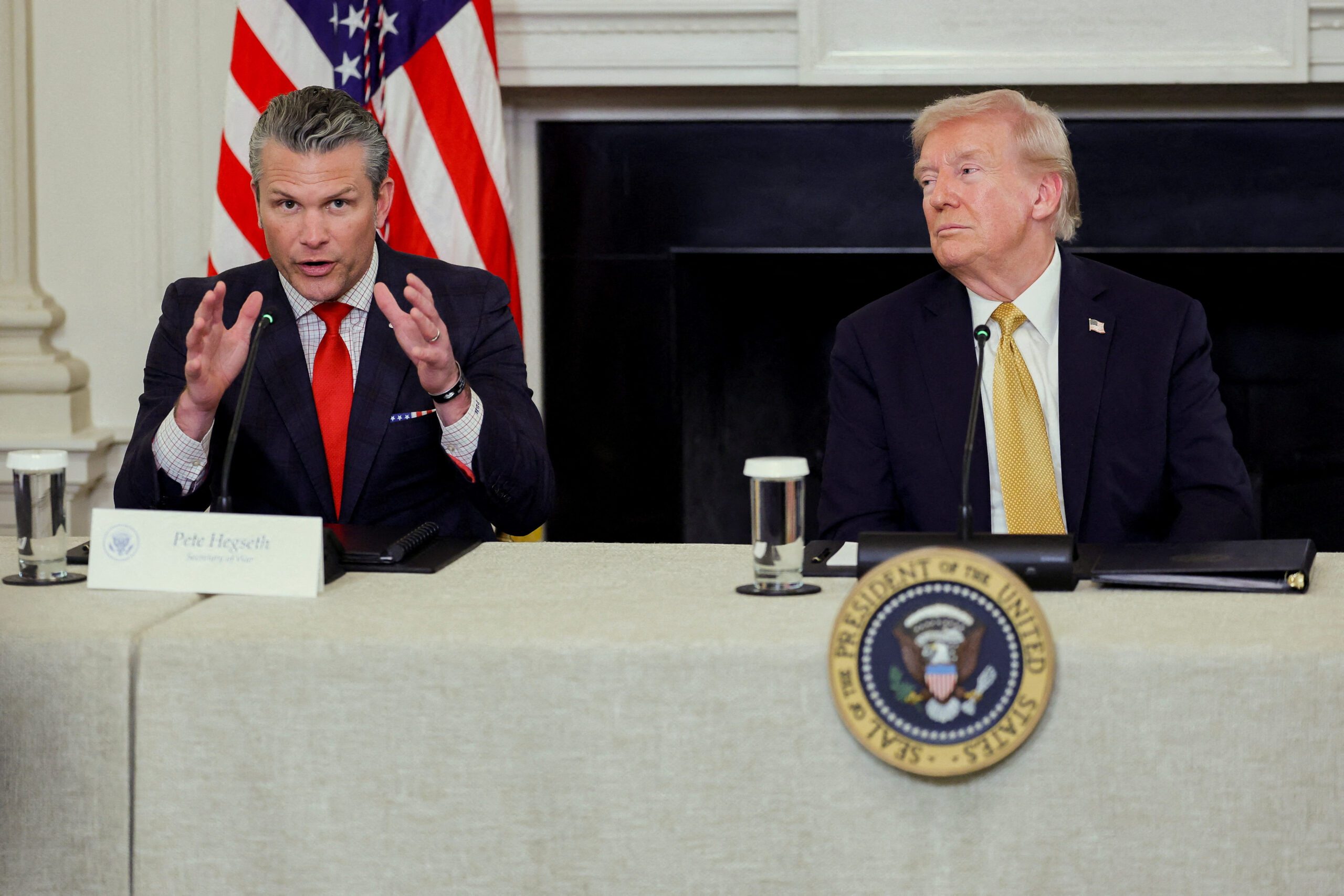By Hyonhee Shin and Daewoung Kim
SEOUL/BUSAN, March 28 (Reuters) – North Korea unveiled new, smaller nuclear warheads and vowed to produce more weapons-grade nuclear material to expand its arsenal, state media said on Tuesday, as a U.S. aircraft carrier arrived in SouthKorea for military drills.
North Korea’s Korean Central News Agency (KCNA) released photos of the warheads, dubbed Hwasan-31s. Leader Kim Jong Un visited the Nuclear Weapons Institute and inspected new tactical nuclear weapons and technology for mounting warheads on ballistic missiles, as well as nuclear counterattack operation plans, KCNA said.
Nuclear experts said the images could indicate progress in miniaturizing warheads that are powerful yet small enough to mount on intercontinental ballistic missiles capable of striking the United States.
“It has something more powerful in a smaller space. That’s worrisome,” said Kune Y. Suh, professor emeritus of nuclear engineering at Seoul National University, comparing the new warheads to the 2016 version.
Kim Dong-yup, a former South Korean naval officer who teaches at Kyungnam University, said the images appeared to show “a miniaturized, lightweight and standardized warhead” intended for use with at least eight different delivery platforms listed in posters on the wall, including missiles fired from submarines.
“Now that the delivery vehicles are nearly ready, they would churn out warheads to secure second strike capabilities – perhaps hundreds, not dozens – while running centrifuges even harder to get weapons-grade nuclear material,” he said.
Kim Jong Un ordered the production of weapons-grade materials in a “far-sighted way” to boost its nuclear arsenal “exponentially” and produce powerful weapons, KCNA said.
He said the enemy of the country’s nuclear forces was not a specific state or group but “war and nuclear disaster themselves,” and the policy of expanding the arsenal was solely for defensive purposes and regional peace and stability.
U.S. EXERCISES
In Washington, White House national security spokesperson John Kirby said the United States remained willing to discuss verifiable denuclearization of the Korean peninsula, but North Korean had shown no desire for such talks.
“So we will continue to make sure that we have the appropriate military capabilities and the appropriate readiness to use those capabilities if need be, to protect our national security interests and those of our allies,” he said, referring to large-scale military exercises underway with South Korea.
Kim was also briefed on an IT-based integrated nuclear weapon management system called Haekbangashoe, which means “nuclear trigger,” whose accuracy, reliability and security were verified during the simulation of a nuclear counterattack, KCNA said.
North Korea fired short-range ballistic missiles on Monday and conducted a nuclear counterattack simulation last week against the U.S. and South Korea, which it accused of rehearsing an invasion. A commentary in North Korea’s Rodong Sinmun said the U.S.-South Korea military exercises amounted to “an open declaration of war.”
KCNA said the North Korean military simulated a nuclear airburst with two tactical ballistic missiles equipped with mock warheads and tested a nuclear-capable underwater attack drone.
It said the Haeil-1 drone reached a target in waters off the northeast coast after cruising along a “jagged and oval” 600km (373-mile) course for more than 41 hours.
South Korean President Yoon Suk Yeol said Pyongyang did not deserve “a single penny” of economic aid while pursuing nuclear development, his spokesman said.
A South Korean military spokesman said additional analysis would be needed to verify whether North Korea’s new warheads were deployable. He said the report on the underwater drone was most likely “exaggerated and fabricated.”
U.S. CARRIER STRIKE GROUP
On Tuesday, a U.S. carrier strike group led by the Nimitz docked at South Korea’s Busan naval base after joint drills. It was the carrier’s first visit in nearly six years and coincides with the 70th anniversary of the U.S.-South Korea alliance.
South Korean Rear Admiral Kim Ji-hoon said the joint exercises were intended to improve U.S. extended deterrence – a reference to the U.S. nuclear umbrella protecting its ally – given the evolving North Korean threat.
The strike group commander, Rear Admiral Christopher Sweeney, said his ships were prepared for any contingency.
“We don’t seek conflicts with (North Korea). We seek peace and security. We’re not going to be coerced, we’re not going to be bullied and we’re not going anywhere,” he told reporters.
(Reporting by Hyonhee Shin; Additional reporting by Ju-min Park in Seoul, Dae-woung Kim in Busan and David Brunnstrom in Washington; Editing by Gerry Doyle and Grant McCool)
(c) Copyright Thomson Reuters 2023.

 Join The Club
Join The Club












